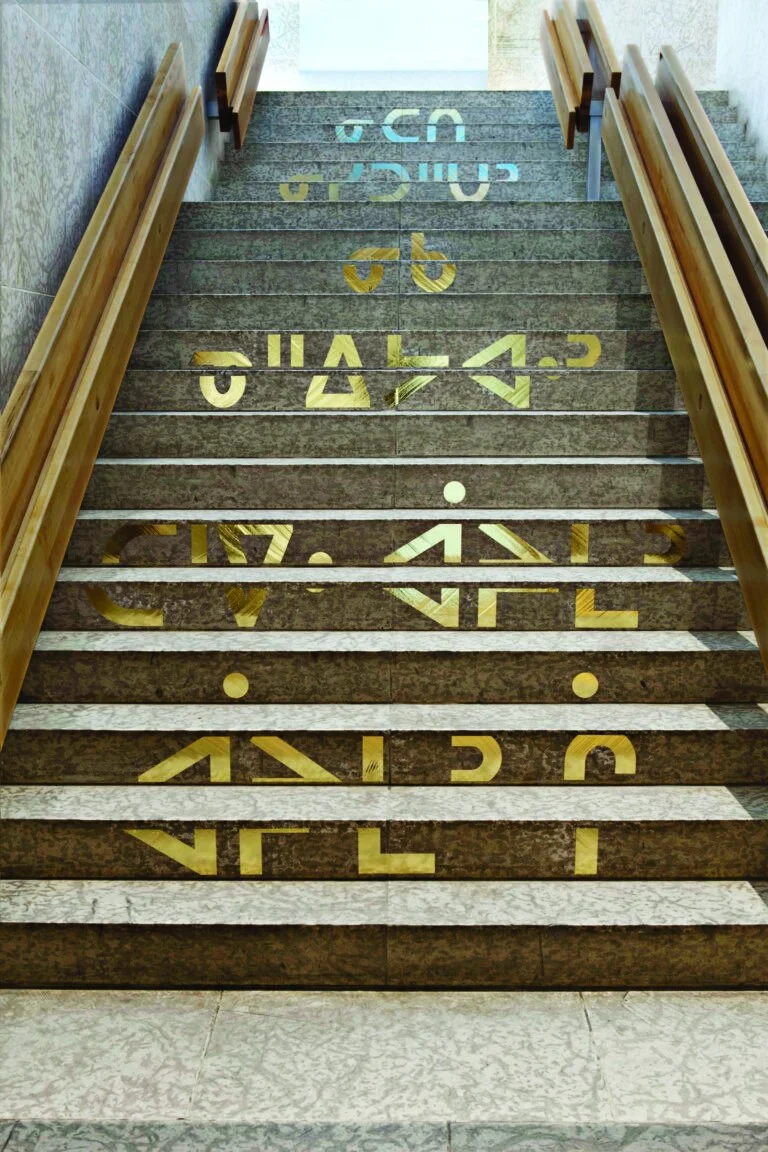Joi T Arcand Feature in Canadian Art
Canadian Art
FEATURES / FEBRUARY 28, 2019
Our Languages Live Within Us
Words affect the way we make, do and think. For Indigenous artists, various types of communication don’t always translate—to English, or to written or spoken language
by Lindsay Nixon, Scott Benesiinaabandan, Joi T. Arcand, Jordan Bennett and Dee Barsy
(Excerpts reposted from Canadian Art website)
I wish I could write this whole introduction in Plains Cree, one of my Indigenous languages. I can’t. My brain has been rewired by a foreign language that invaded my head, like an earworm in a Katy Perry song. I think in an English way now. I don’t know how to express the things I want to say or even if they are translatable because Cree ways of knowing are so radically different from English ways. Cree words express subject relationships—actions, verbs, doing— whereas English expresses object relations and relies on nouns, naming and claiming. My English-mindedness influences the ways I conceptually move through the world and how I describe my relationships, relations and actions.
Indigenous language reclamation is integrated throughout “Insurgence/Resurgence.” Though I’m not certain reclamation is the right word. Reclamation feels like the child of an older generation intent on having their languages recognized and revitalized in the face of extinction. The artists in “Insurgence/Resurgence” express their languages as continually living, growing, evolving and surging in their minds and hearts.
For this sampling of Indigenous makers, doers and creators, language is an embodied practice, miyowawaynamowin (good creation), which allows Indigenous artists to communicate in ways that don’t always translate to English, or to written or spoken language, for that matter.
Joi T. Arcand, ᐁᑳᐏᔭ ᐋᑲᔮᓰᒧ e¯ka¯wiya a¯kaya¯s¯imo “Don’t speak English” (detail), 2017. Vinyl, dimensions variable. Commissioned by Winnipeg Art Gallery. Photo Scott Benesiinaabandan
JOI T. ARCAND
ᐁᑳᐃᐧᔭ ᐋᑲᔮᓰᒧ E¯KA¯WIYA A¯KAYA¯SI¯MO “DON’T SPEAK ENGLISH” (2017)
Residential schools stole the words from the ancestors’ hearts, minds and tongues, and along with them, their spirits. During Arcand’s research, Darryl Chamakese, her frequent collaborator and translator, told her “syllabics” in Plains Cree is cahkipêhikana, translating to “marks representing the spirits of sound.” To me, Arcand’s work is land and spirit medicine (maskihki), taking up space and commanding presence in materiality, form and location. Arcand honours the Indigenous grandparents—who had their languages taken and cultural continuity severed from future bloodlines— by marking the space for Cree speakers and shifting the balance of power in colonial structures. Arcand marked the floor of the stairs leading up to the exhibition with Cree syllabics so they reclaim the ground, the land, for Cree peoples, and simultaneously refuse settler readings of the space. Cree speakers are now the ones chiding settlers for speaking out of turn, just as settlers used to punish our ancestors in residential schools: êkâwiya âkayâsîmo. Don’t speak English. Never forget you’re on Cree land, invader.
This is exerpt from an article by Lindsay Nixon in Canadian Art’s Summer 2018 issue, “Translation.”
Lindsay Nixon is a Cree-Métis-Saulteaux curator, an award-winning editor and writer, and a McGill art history Ph.D. student. They currently hold the position of editor-at-large for Canadian Art.
